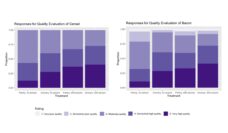The Supplemental Nutrition Assistance Program (SNAP), commonly known as food stamps, is the largest program in the country aimed at addressing hunger. Despite the popularity of its central goal to feed the hungry, SNAP is embroiled in a bitter political battle. Making work requirements stricter has become a popular tactic among some Republican lawmakers who hope to spend less on programs like SNAP.
Work requirements typically mandate that adults work or attend job training at least 30 hours a week to receive SNAP benefits. Exemptions exist for pregnant people, individuals with disabilities, and the elderly. However, work requirements don’t increase employment and lead to drops in SNAP participation. For many families in the most need, meeting these requirements can be extremely challenging because of obstacles to a stable job or appropriate job training like not having a car, addiction, or mental illness.
Work requirements for SNAP were established in 1996 but were waived in 2009 after millions of Americans experienced financial struggles during the Great Recession. As labor markets improved, the work requirement was reinstated state-by-state. In January 2016, SNAP work requirements were reinstated in Florida, Mississippi, and most of Alabama. Non-exempt adults in these states had to provide evidence of employment by April 2016. Those unable to do so were dropped from SNAP.
When states reinstated SNAP work requirements, food-insecure people who lost SNAP benefits had no choice but to seek other sources of assistance. Many turned to food pantries.
SNAP gives families more autonomy and does not put them at the mercy of the variable and often limited stock in food pantries.
To investigate whether imposing SNAP work requirements increases reliance on food banks, Joel Cuffey and colleagues evaluated monthly participation data from food pantries in Alabama, Florida, and Mississippi.
More people than ever before turned to food pantries in urban areas after the imposition of SNAP work requirements. For every 100 people dropped from SNAP, 44 additional households started relying on urban food pantries.
Advocates for SNAP work requirements tend to have “pull yourself up by your bootstraps” mentalities. They aim to trim the federal budget when it comes to providing groceries for low-income Americans. Recently, Senator Mike Lee (R-UT) introduced a bill to strengthen federal SNAP work requirements and stop the program’s expansion. However, these strategies might simply be trading one form of federally funded food for another. As food-insecure residents transition from SNAP payments to food pantries, the cans of soup or boxes of pasta they receive are often supplied through federal food commodity programs, such as The Emergency Food Assistance Program (TEFAP). Federal resources are being reshuffled.
The difference between provided by government programs like TEFAP and food purchased through a SNAP EBT card is that in the latter method, recipients are free to choose foods that meet their needs at their preferred grocery stores. SNAP gives families more autonomy and does not put them at the mercy of the variable and often limited stock in food pantries.
Photo via Getty Images














